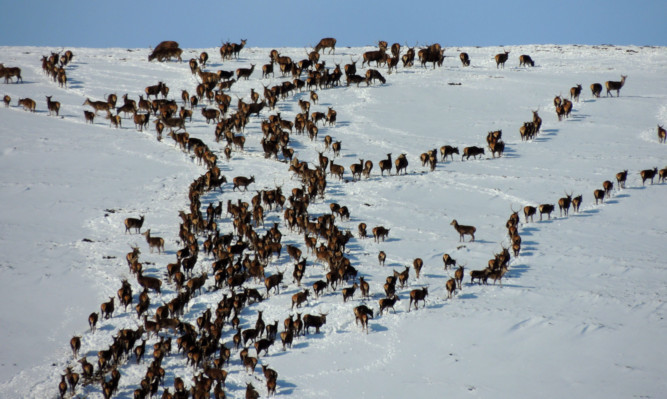A deer cull in the Angus Glens has fallen short of its target, with more than 300 animals escaping the guns.
Since October 20, 518 female deer have been killed, against a target cull of 830, despite Scottish Natural Heritage (SNH) extending the culling season.
The cull is part of a 10-year agreement instigated by the Deer Commission for Scotland, which has now merged with SNH.
It was implemented to “protect the natural environment” by reducing excess deer numbers across the Glenisla, Glenprosen and Glenshee estates.
However, adverse weather and snowfall prevented the estates from getting access to the deer over the course of the winter for selective culling.
Donald Fraser, SNH wildlife management operations manager, said: “Unfortunately, a small number of estates didn’t reach their hind cull targets this year.
“This means a more demanding target for following years. That’s why we permitted hind culling for a further two weeks beyond the normal season.
“This further culling stopped at the end of February and resulted in 55 deer being shot out of season.”
Although the Caenlochan estates have succeeded in reducing herd numbers to a level of 20 per sq km, they have fallen short of 19 per sq km target that is demanded by SNH.
Mr Fraser said: “Everything the local estates and SNH do is in keeping with the nationally-agreed Deer Code, which makes clear the requirements for deer management, including welfare issues.”
The Scottish Gamekeepers Association (SGA) welcomed the news, saying it was pleased that “reasonable restraint” had been shown, particularly with serious concerns for animal welfare.
However, the representative body would like SNH to carry out proper analysis of what exactly is causing the damage to alpine plants in the Caenlochan area.
SGA vice-chairman Peter Fraser said: “There is more to managing deer than just killing them.
“There are problems in Caenlochan, but proper research needs to be done.
“Is it deer causing all of the problems?” he asked.
“We would like to see SNH leading on this by assessing deer, hare and sheep impacts in the area. Tests have been done in other parts of Scotland on this and we would be happy to assist, if asked.”
